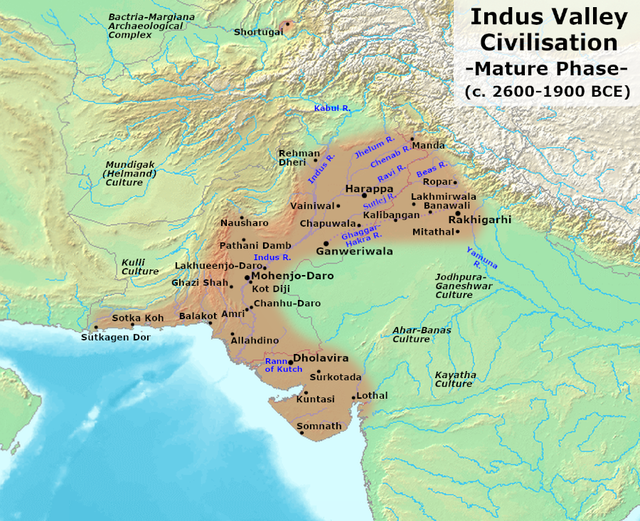Dholavira | 06 Mar 2025
The President of India visited Dholavira, appreciating the technological advancements of the Harappan civilization.
- Harappan (Indus Valley) Civilization:
- It was an urban civilization that flourished along the Indus River from around 3300-1300 BCE. It was discovered by John Marshall in the 1920s.
- Major sites of the Harappan civilization include Harappa, Mohenjo-daro, Banawali, Dholavira, Lothal, and Ropar.
- Dholavira:
- It is located in Kutch (arid island of Khadir), Gujarat, is a significant archaeological site inhabited from 3000 BCE to 1800 BCE.
- It was discovered by Jagatpati Joshi in 1968.
- It is the fifth-largest site of the Indus Valley Civilization and lies between two seasonal streams, Mansar and Manhar.
- Archaeological findings include terracotta pottery, seals, ornaments, and evidence of metallurgy. It was a trade hub for copper, jewelry, and timber, with inscriptions in Indus Valley script.
- No human remains have been found at the site.
- Dholavira features a walled city with a fortified castle, middle and lower towns, and a cemetery.
- Its advanced water system includes 16 reservoirs and step wells.
- It was declared a UNESCO World Heritage Site in 2021.
- It is located in Kutch (arid island of Khadir), Gujarat, is a significant archaeological site inhabited from 3000 BCE to 1800 BCE.
| Read More: India’s 40th World Heritage Site: Dholavira |

